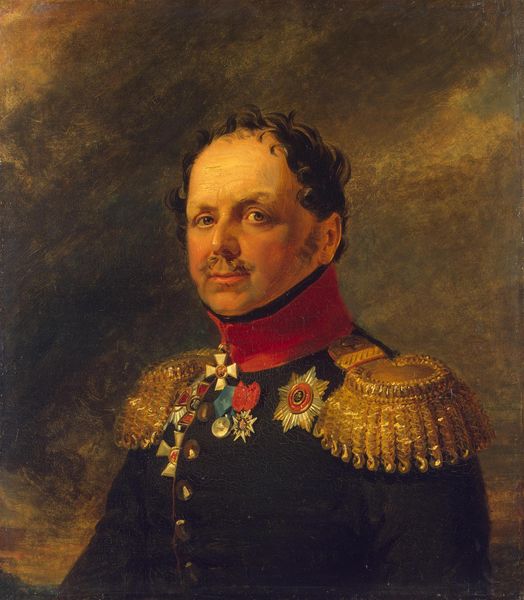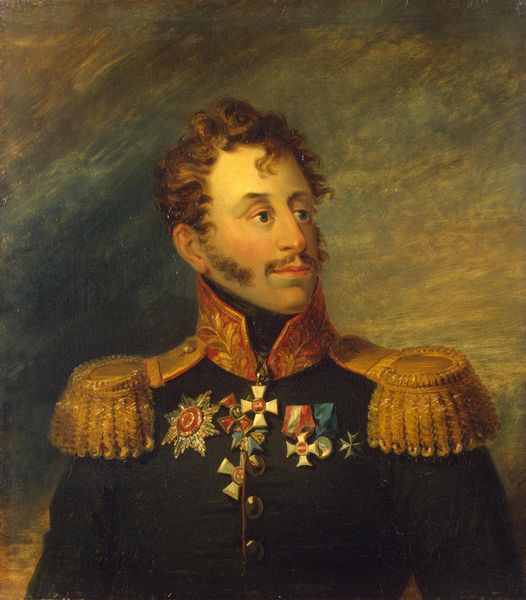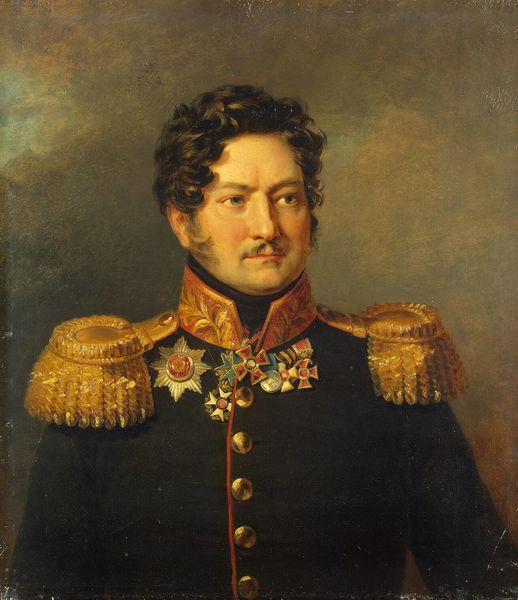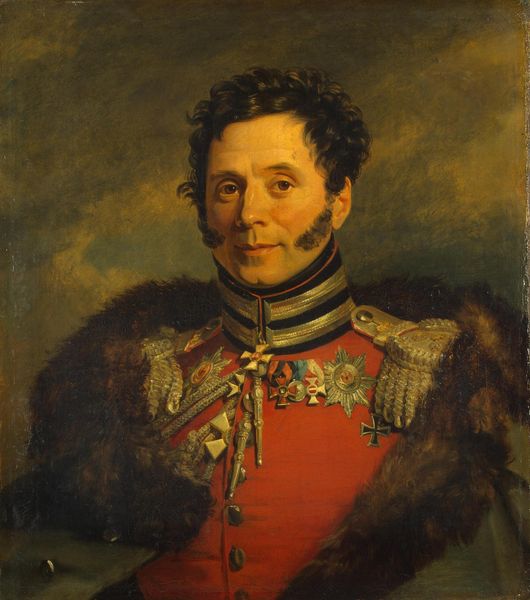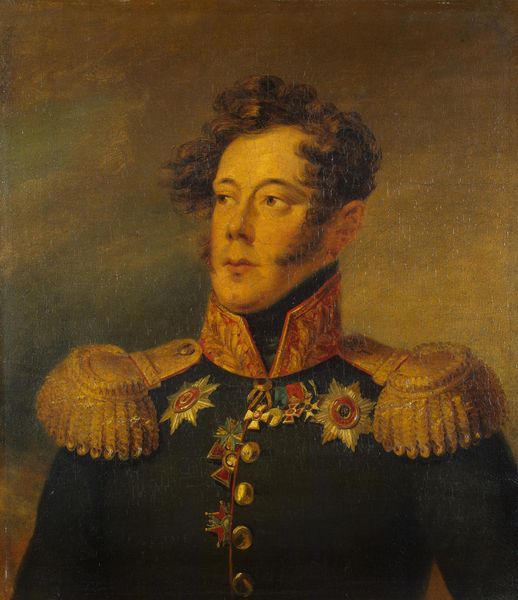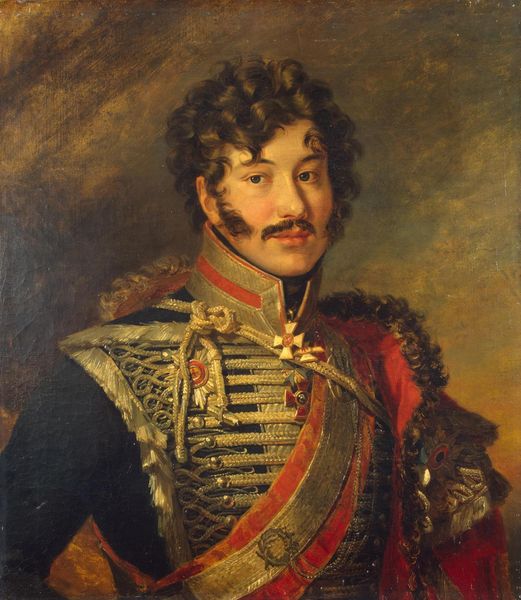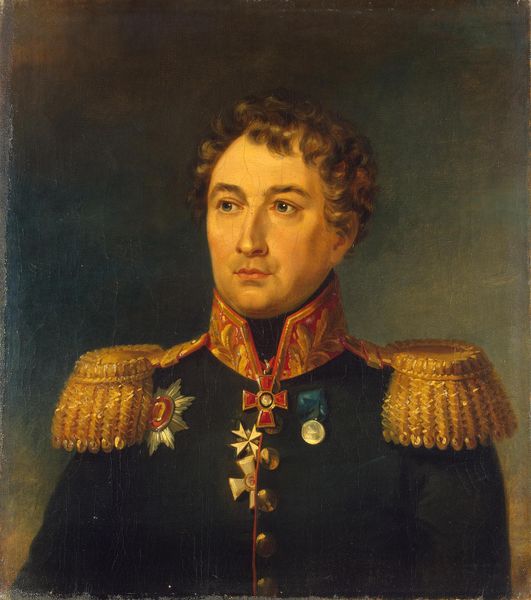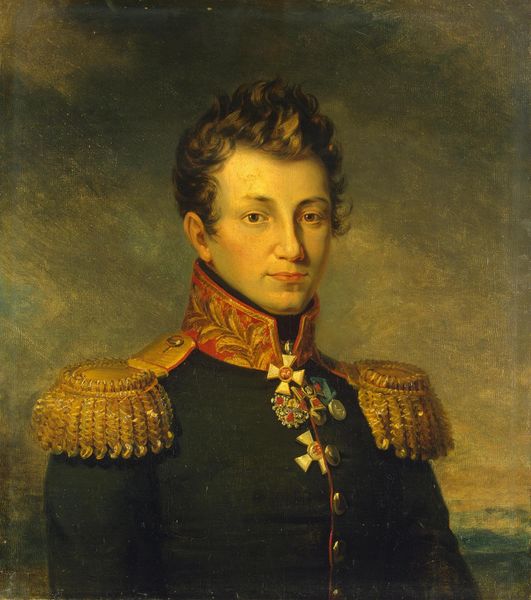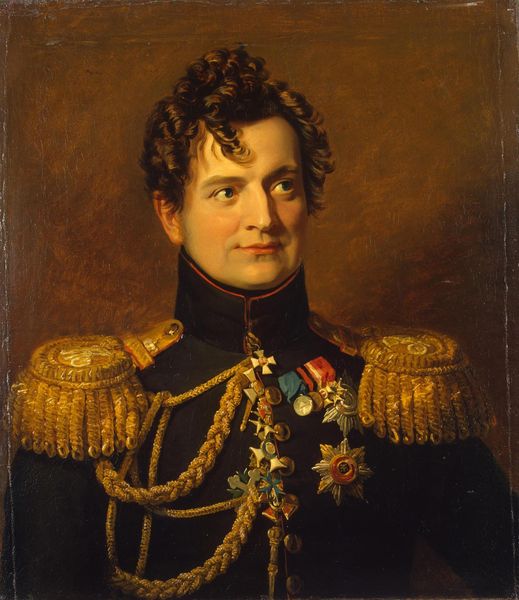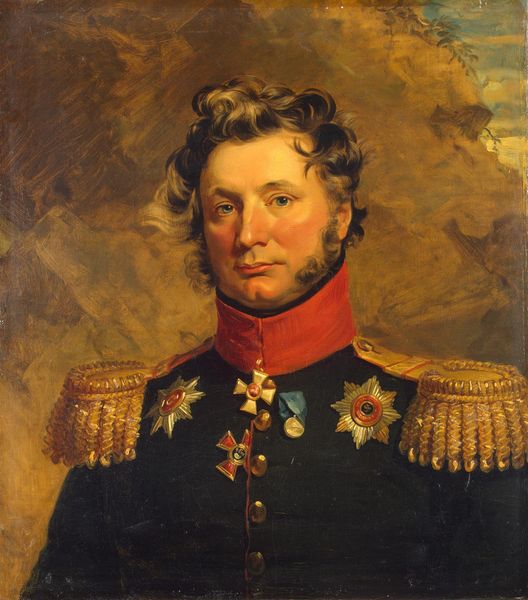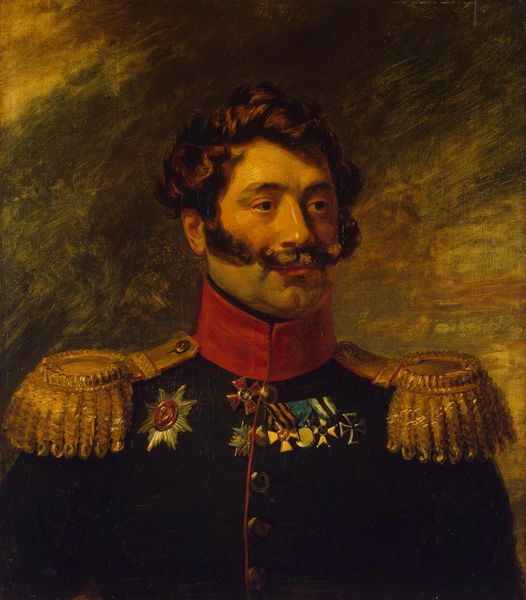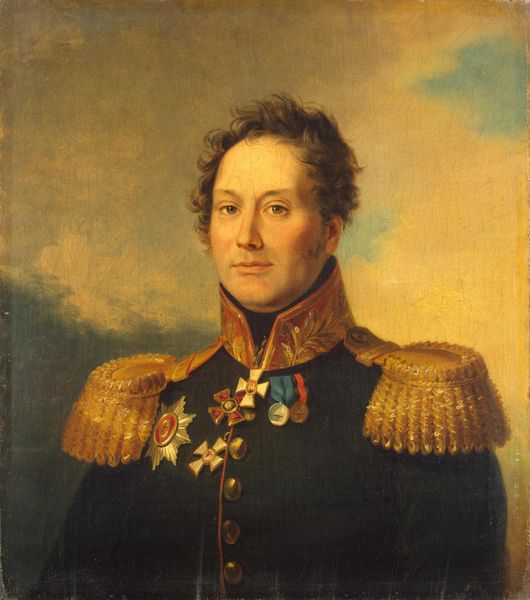
painting, oil-paint
#
portrait
#
portrait
#
painting
#
oil-paint
#
romanticism
#
academic-art
Copyright: Public domain
Curator: Here we have George Dawe's oil painting, "The Portrait of Stepan Stepanovitch Andreyevskiy", completed in 1821. It resides at the Hermitage Museum. Editor: Oh, interesting! My first impression is of its formal, almost stiff composition. The palette feels very muted, dominated by reds and browns, emphasizing a kind of controlled power. Curator: Dawe, as a court painter, produced numerous portraits of Russian military figures after the Napoleonic Wars. His studio assistants actually handled much of the initial painting process; Dawe himself specialized in capturing the likeness of the sitter and refining details to satisfy the patron and portray a certain degree of nobility. Editor: You point to interesting production aspects; yet even within a system of studio assistance, I'm compelled by the almost unsettling symmetry—the calculated arrangement of medals, the high collar, the precisely rendered curls framing the face. I want to decode the intended symbolism here. Is this rigid formality meant to convey the subject's unflappable character? Curator: I find it interesting to consider the labor embedded in those meticulous details. The gold trim on the uniform and those decorations weren't conjured from nothing. Think of the seamstresses, metalworkers, and the infrastructures that supplied these markers of rank and status, and the societal expectation around portraying military authority. Editor: True, it does create this interplay between ostentatious display and rigid control. Dawe also uses light so purposefully, doesn't he? The focused illumination on the face against the shadowed uniform emphasizes Andreyevskiy’s individual presence but the material surrounding is not forgotten. Curator: That highlights an interesting point, perhaps we’re not too dissimilar. We might disagree over primary points of focus, but these artistic mediums are very important to understanding socio-economic status of the age, or in Dawe’s context, an exercise in nation building after the turbulence of the Napoleonic wars. Editor: Absolutely, whether we focus on its intrinsic components or the social factors enmeshed within its production, both offer perspectives onto "The Portrait of Stepan Stepanovitch Andreyevskiy." It exemplifies the intricate and compelling art-making in 19th-century Russia.
Comments
No comments
Be the first to comment and join the conversation on the ultimate creative platform.
